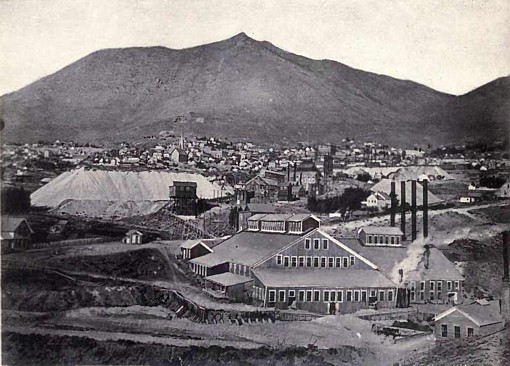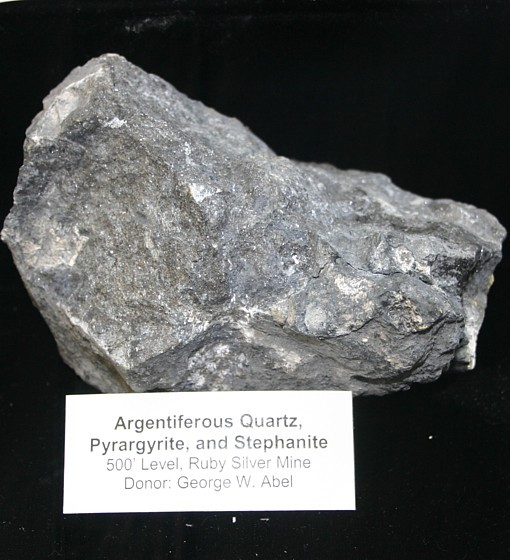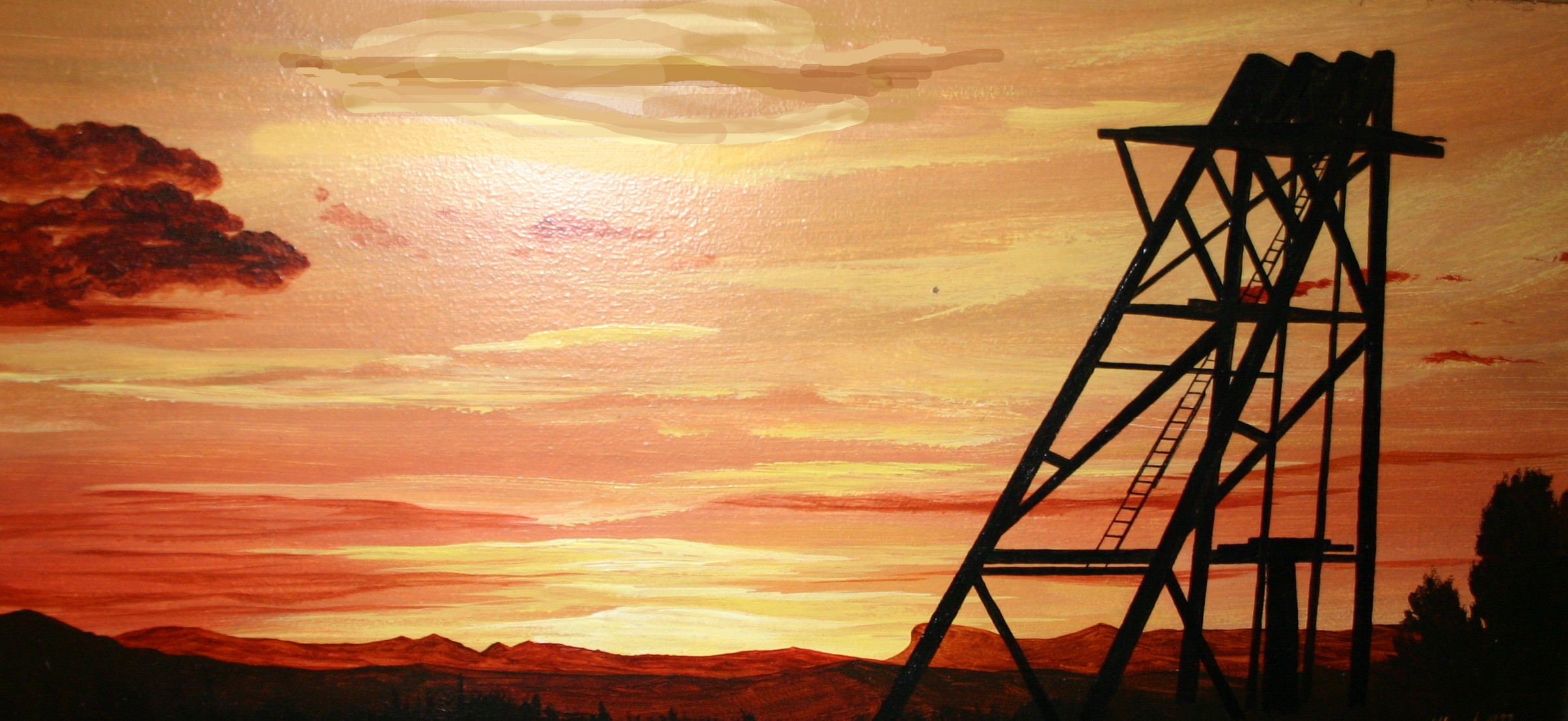About that time, a Pony rider the mail was then being carried across the Plains and over the Sierras to California by Pony Express came in and reported that the Piute Indians, till then friendly toward the whites, had burned Williams' Station, on the Carson River, thirty-one miles below Dayton, and had murdered two or three men whom they found in charge. The news that the Piutes were on the war path, and had begun killing and burning, spread like wild-fire through the several towns and settlements of the country. It was determined that the murderous redskins should be punished. There was a call for volunteers in all the towns, and the call was promptly responded to everywhere. The news of the burning of Williams' Station, and the murders there, reached Virginia City, May 8th, 1860, and May pth a party of 105 men, volunteers from the several towns, under command of Major Ormsby, of Carson City, marched down the Carson River for the purpose of overtaking the Indians, and inflicting upon them a proper chastisement.
As I am not writing a history of Nevada I shall leave a detailed account of the "Indian war" to be given by some future writer. I shall but briefly sketch this first and last Indian trouble in Nevada, not attempting to give the names of more than a few of the men who were prominent participants in the battles at Pyramid Lake. The men under Major Ormsby were poorly armed, badly mounted, and almost wholly unorganized. The majority of the men thought that there would not be much of a fight. They thought they should probably have a bit of a skirmish with the Indians, kill a few of them, capture a lot of ponies, and on the whole have rather a good time. Major Ormsby and a few of the leading men and old settlers doubtless knew the Indians better, but most of the recent arrivals from California who volunteered on the occasion thought it would turn out a sort of pleasure excursion. They were woefully disappointed.
Finding no Indians at Williams' Station on his arrival there, Major Ormsby and command marched toward Pyramid Lake, known to be the headquarters of the Piute tribe in that region of country, and distant less than two days' march. On the morning of the i2th of May, on the Truckee River, at a point about three miles from Pyramid Lake, they found a party of Indians occupying a strong position on a rocky hill. They attacked these Indians, who retreated after firing a few shots, falling back along the sides of a ravine. As the Indians fell back they continued a scattering fire. The whites charged into the ravine in pursuit. They had proceeded some distance when a body of two or three hundred Indians suddenly confronted them, pouring into their ranks in quick succession several deadly volleys. On the side of the whites many men and horses fell at this spot. The volunteers were staggered by this sudden onslaught, and made but a feeble reply to the fire of the enemy. At this critical juncture it was observed that the Indians were gathering in the ravine behind them, when a precipitate retreat was made for a piece of woods on the river. The Indians hotly pursued them, firing as they advanced. At the edge of the wood the whites dismounted and tried to make a stand, but the Indians gathered from all sides, pouring in a rapid and galling fire, killing several men and horses. The men were then ordered to mount for another charge. While this was being done the Indians rushed forward, firing and yelling, throwing the whites into a confusion which ended in a precipitate and disorderly retreat. Many men had no horses, and these fell an easy prey to the elated and victorious savages who pursued the whites a distance of fifteen or twenty miles, even overtaking and killing men who were tolerably well mounted.
The trail of the retreating volunteers was strewn with dead bodies, saddles, guns, knives, pistols, and blankets, thrown away when the chase became desperate, and every man was trying to save his own life. Of the 105 men who went into the fight 76 were killed and a few wounded, slightly, who managed to escape. Among the killed was Major Ormsby, the commander of the expedition, an old resident in the country; and Henry Meredith, a young lawyer from Nevada City, California, a man well-known and highly esteemed on the Pacific Coast. At the first volley fired by the Indians, in the canyon into which the command had been entrapped, Meredith was wounded and fell from his horse, but rose on one knee and fired three shots from his revolver as the foe advanced upon him. When the survivors of this slaughter reached Virginia City and told the news of the defeat, the excitement was intense. In all the towns it began to be feared that the Indians, elated by their victory, would come in and sweep everything before them. It was said that there were 500 warriors in the fight at Pyramid Lake and it was supposed that the Piutes could muster 5,000 men. Dispatches were sent to California for regular troops, and as the news spread men volunteered and companies were formed in Sacramento, Nevada City and Downieville, California. Men also volunteered again in the several Washoe towns, and soon an army of several hundred men, regulars and volunteers, was in the field for the effectual putting down of the savages. On the 24th of May, the second expedition against the Indians left Virginia City. It consisted of a force of 207 regular soldiers and 549 volunteers, all armed with minie-muskets and well equipped in every respect. The regulars had with them two twelve-pounder mountain howitzers, and all felt in starting out that they were now prepared to give the Indians a good substantial battle, in case they should be found in fighting humor. About noon, June 2d., the Piutes were, found in force near the old battle-ground at Pyramid Lake, and fire was opened on them. As soon as the firing began, the plain, the ravines, hillsides, sand-drifts, and mountain tops seemed alive with Indians. The battle was short and decisive. The Indians were severely punished. They lost 160 killed and had a great many wounded, while the whites had but two men killed and only three or four wounded. Captain E. F. Storey, from whom Storey county, Nevada, takes its name, was shot through the lungs, and died in camp in the evening. Captain Storey was taking aim at an Indian who was lying behind a rock at the time he received his death wound. The Indian was too quick for him and got the first shot. Storey's men instantly riddled the fellow. This expedition brought in the remains of Meredith and Major Ormsby. The bodies of many of the dead were found to have been horribly mutilated. About the place where the bodies of the volunteers were found, the ground, for the space of two hundred yards, was beaten as solid as a brickyard. Appearances indicated that the Indians had taken these men alive, and had held a big dance about them before killing them. After this battle no more was seen of the Indians in a long time, and there has been no trouble with them since. In September of that year, Winnemucca, chief of the tribe, visited Fort Churchill, (a fort that was built on the Carson River, near Williams' Station, after the last battle at Pyramid Lake,) accompanied by several leading men of his tribe. The old fellow said that he not only desired at that time, but at all other times had desired, to live at peace with the whites.
The late trouble had been brought about by a few Bannocks, a lot of Shoshones and Pitt River Indians, with some bad Piutes. The whites had, he said, charged in among his people without seeking an interview with him and he had defended himself to the best of his ability. He hoped that the peace would be permanent, arid desired that the whites and Piutes should now become firm friends and allies. After the trouble was all over the cause of it was ascertained. It was this. In the absence of Williams, proprietor of the station where the massacre, as it was called, occurred, two or three men left in charge had seized upon two young Piute women and had treated them in the most outrageous manner, keeping them shut up in an outside cellar or cave for a day or two. The husband of one of the women coming in search of his wife, heard her voice calling him from the place in which she was hidden. When he attempted to go to his wife's assistance the men at the station beat him and drove him away, threatening to kill him if he did not leave at once. It so happened that the women who had been outraged were of the branch of the Piute tribe living at Walker Lake who had married men of the Bannock tribe. The Indian who was driven away from the station hastened to Walker Lake and informed the chief man there of the outrage, asking him to send a band of braves to punish the men at the station. But the sub-chief at Walker Lake would send no men. The wronged Indian then went to Old Winnemucca, who said he would send no men, that he wanted no trouble with the whites. His advice was that the whites be informed of the outrage, and requested to punish the men in their own way, in accordance with their laws. Not satisfied with this, the Bannock went to young Winnemucca, the war chief. Here he was given the same advice that he had already received from the old chief. Thirsting for vengeance, the man then hastened to his own country and his own chief. When the chief of the Bannocks had heard the man's story he at once gave him thirty of his best men, and told him to go and avenge the wrong that had been done him. He went and the result is known.
After killing the men and burning the station, the Bannocks marked their return trail with blood. They murdered in cold blood several small parties of unarmed prospectors. The bodies of these were not discovered until after the last fight at Pyramid Lake, when the murders were charged to the account of the Piutes. Old Winnemucca was not at the first fight at Pyramid Lake, he being on the Humboldt River at the time, but young Winnemucca, the war-chief, was there, and commanded. Before the fight began he showed a white flag and wished to explain 'matters, but a man among the whites, who had a telescope rifle, fired and killed an Indian who showed himself on the rocks, and thus precipitated the battle which ended so disastrously for the whites. When the volunteers returned victorious from the second battle, they were the heroes of the hour, until some of them began to walk into stores and help themselves to clothing in the stores. Soon after the last battle at Pyramid Lake, prospecting parties again began to scout out into the wild and then unknown and unexplored regions lying to the eastward and southward of the Comstock range. Stories of wonderful discoveries of all kinds in these regions kept the people in the several mining towns and settlements in a constant state of excitement. Reports of these new discoveries, greatly exaggerated in most instances, reaching California, a return tide of miners from that State soon set in. The marvellous richness of the Ophir and other Comstock mines continuing, and constantly increasing, capitalists came flocking back to Virginia and Gold Hill, and it was not long before all enterprises were in a condition as flourishing as before the Indian troubles began.
Return
to The Nevada Mining Rush Page:
Nevada Gold Rush Mining History



